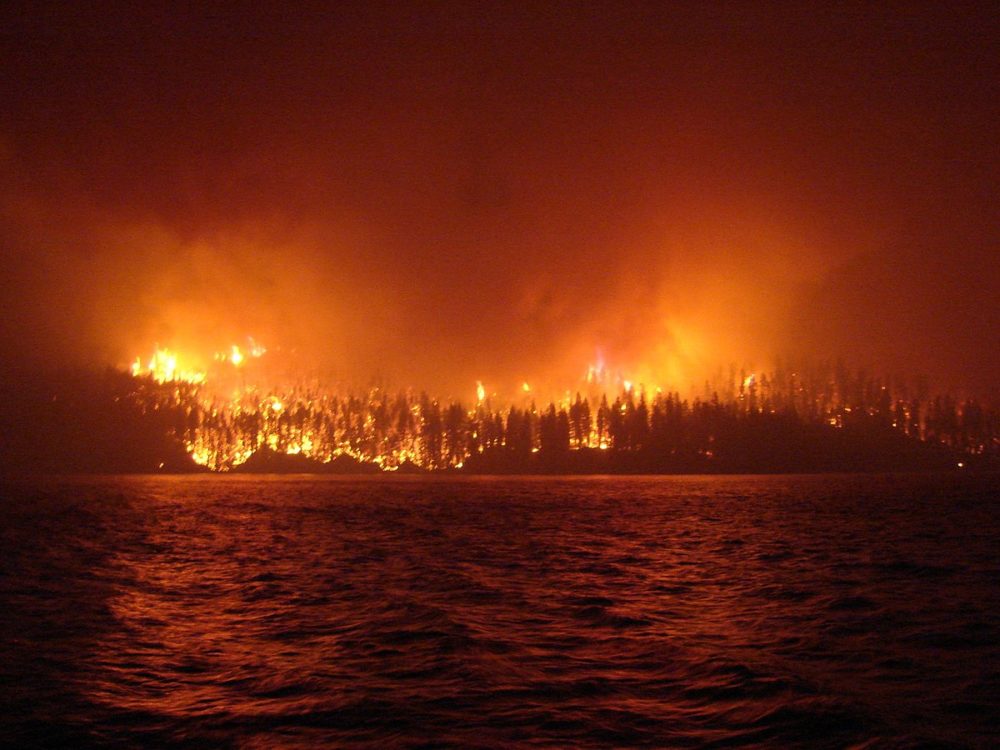It was a tough summer for climate change advocates, and not just because of blistering temperatures and terrifyingly large wildfires in the U.S. and around the globe.
And not only due to the shamefully short-sighted decision-making from the US executive branch. (Hello, coal-fired power! Goodbye, improved vehicle mileage standards!) Why, after all, would we want to avoid the punishing heatwaves and never-ending fire seasons that climate change promises to bring? Or, for that matter, why encourage cleaner air, fewer respiratory deaths, and reduced dependence on fossil fuels?
What I’m referring to, however, is this summer’s dismissal of the lawsuits in California, New York, and Washington, brought specifically with the aim of addressing our climate crisis.
The cases in California and New York were brought by cities seeking billions of dollars in compensation from some of the largest oil and gas producers in the world. They sought redress in order to adapt to the effects of climate change, such as sea level rise and storm surges. The judges overseeing the two cases relied on similar reasoning for dismissal: issues related to greenhouse gas emissions are best handled by the executive and legislative branches.
An effort of this magnitude to reshape the legal landscape will take time.
In Washington, the lawsuit was brought by a group of residents, all under the age of 18, to compel the state to put a plan into place that will significantly reduce the state’s carbon emissions. As in New York and California, the judge found the dispute to be primarily a political one, inappropriate for the courts to resolve.
But before you despair over the future of all climate litigation, it’s worth taking a step back to place these results in proper context. The decisions are by no means the end of the story. Even within these outcomes, there are glimmers of progress.
Torts and Trusts
The three dismissed cases are only a small portion of the overall legal picture. There are cases to stop the extraction, transportation, and combustion of fossil fuels, and cases to defend climate protesters attempting the same. There are cases to improve the generation and distribution of electricity, and cases to ensure that the government isn’t hiding information from the public. You get the idea. Climate litigation, in all its forms, will be with us for some time.
But to understand exactly where these three decisions fit, it’s worthwhile to focus on just two varieties of cases proceeding through the courts right now: tort cases and trust cases.
Here’s your legal primer for the day.
Tort Cases
The California and New York cases are climate torts. Torts are a class of legal claims that allow parties to redress wrongdoing without the need to involve the authorities. People can haul whoever or whatever caused them injury directly into court without going through law enforcement first. Torts have long been part of US law and include claims that you are likely familiar with, such as assault, trespass, and defamation.
Greatly simplified, climate-based torts assert that oil and gas companies are responsible for producing and promoting fossil fuels despite considerable evidence of their destructive power and consequently, must pay compensation for measures needed to adapt to climate change. For the New York and California cities, this means the money to do things like fortify seawalls and improve stormwater systems.
While the moral logic here may be clear, plaintiffs must overcome a number of legal hurdles including a general judicial reluctance to get involved in matters that demand comprehensive, legislative solutions, as was articulated by the California and New York judges.
Still, for the moment, there is no shortage of jurisdictions willing to sue oil and gas multinationals. Even with the New York and California dismissals, somewhere around ten cases remain, including three added in the last five months: King County filed its lawsuit in May, followed by Rhode Island and Baltimore in July.
Trust Cases
The Washington case is a climate trust lawsuit. It is grounded in the public trust doctrine which, like torts, has a long-established pedigree in the United States. As discussed in an earlier post, the public trust requires that the government protect our shared resources for the long-term benefit of all.
In some instances, the doctrine was limited to aquatic resources such as rivers and coastal tidelands. In spite of that, climate trust cases attempt to extend protections to the atmosphere itself. They also highlight the fact that traditional public trust resources already suffer from an unstable climate: our ocean waters are warmer and more acidic; our rivers are prone to both flooding and drought.
Unlike climate torts, these lawsuits are brought against the government itself – typically a state and its agencies – for failing to adequately address the threat, or affirmatively making the problem worse. The non-profit Our Children’s Trust is pursuing a “Fifty State Strategy” and has a number of active climate trust cases, including in Oregon and Alaska, along with the Washington case.
Rather than seeking money for the harms associated with climate change, trust lawsuits ask courts to step in and order the states to proactively solve the problem. In Washington, the plaintiffs asked the court to prohibit the state from further damaging public trust resources and to require it to develop “an enforceable state climate recovery plan.”
In one especially high-profile case, Juliana v. US, the “youth plaintiffs” represented by Our Children’s Trust sued the federal government itself. That judge found in 2016 that the “the right to a climate system capable of sustaining human life is fundamental to a free and ordered society,” and is protected by the US Constitution.
That, however, is just the beginning. A trial is now scheduled to begin October 29 in Eugene, Oregon, and in the meantime, the government is doing all it can to bring the case to a halt, including unsuccessful requests for the Ninth Circuit and the Supreme Court to intervene.
Turning the Tide
By any measure, both the climate tort cases and climate trust cases are ambitious and potentially groundbreaking. An effort of this magnitude to reshape the legal landscape will take time, and these three cases represent only the opening salvo. What’s more, the decisions were all made by judges at the trial court level, where lawsuits begin the sometimes long and tortuous journey as they are appealed to higher courts.
Arguably, the three cases already broke new ground in one respect: during each, all participants acknowledged the established science on climate change. This may sound like a mild victory at best, but the industry has a long history of supporting full-throated climate denialism.
Litigation can be a catalyst for great change, but it is also a blunt instrument. It’s likely that long-term gains will ultimately arise from legislation and policymaking.
In New York, the judge indicated that the oil and gas companies had not disputed “the scientific consensus that greenhouse gas emissions from fossil fuel use have contributed in global warming.” The California judge began his decision with a history of climate science, going back to the late nineteenth century. He then noted that all of the parties in the case “agree that fossil fuels have led to global warming and the ocean rise and will continue to do so[.]”
In Washington, the judge went further. He not only noted the state’s agreement as to the urgency of the problem, but he put his own sympathies on full display. He encouraged the “young people who are the plaintiffs in the case that they “can (and must) continue to help solve the problems related to climate change.” Although he found that the judiciary should not play a forceful role, he recognized the need to apply pressure to our executive and legislative branches.
The current administration in Washington, DC, appears immune to the reality of climate change, but US residents do have an opportunity to influence Congress this November, as well as directly bring about a pioneering carbon fee in Washington (one that would generate a billion dollars in revenue a year).
Litigation can be a catalyst for great change, but it is also a blunt instrument. It’s likely that long-term gains will ultimately arise from legislation and policymaking. Consider, for example, the value of the tobacco litigation of the 1990s versus state smoking bans in the 2000s.
That perspective has particular resonance this time of year. We should not allow the twists and turns of climate litigation to distract from the ultimate goal of a sustainable energy future. If the courts avoid making bold decisions based on the need to defer to the legislature and the executive, then—as the Washington court advised—we must continue to take the fight to those branches.











Steve Erickso
“In some instances, the doctrine was limited to aquatic resources such as rivers and coastal tidelands.”
The pubic trust doctrine has always been limited to certain aquatic systems ad revolves arid the rights of the public to access those systems and their resources. I’m not aware of any historical instances of it applying to the atmosphere or other commons. Note that this is subtly different than whether particular common resources, such as wildlife, are held in trust by the state.